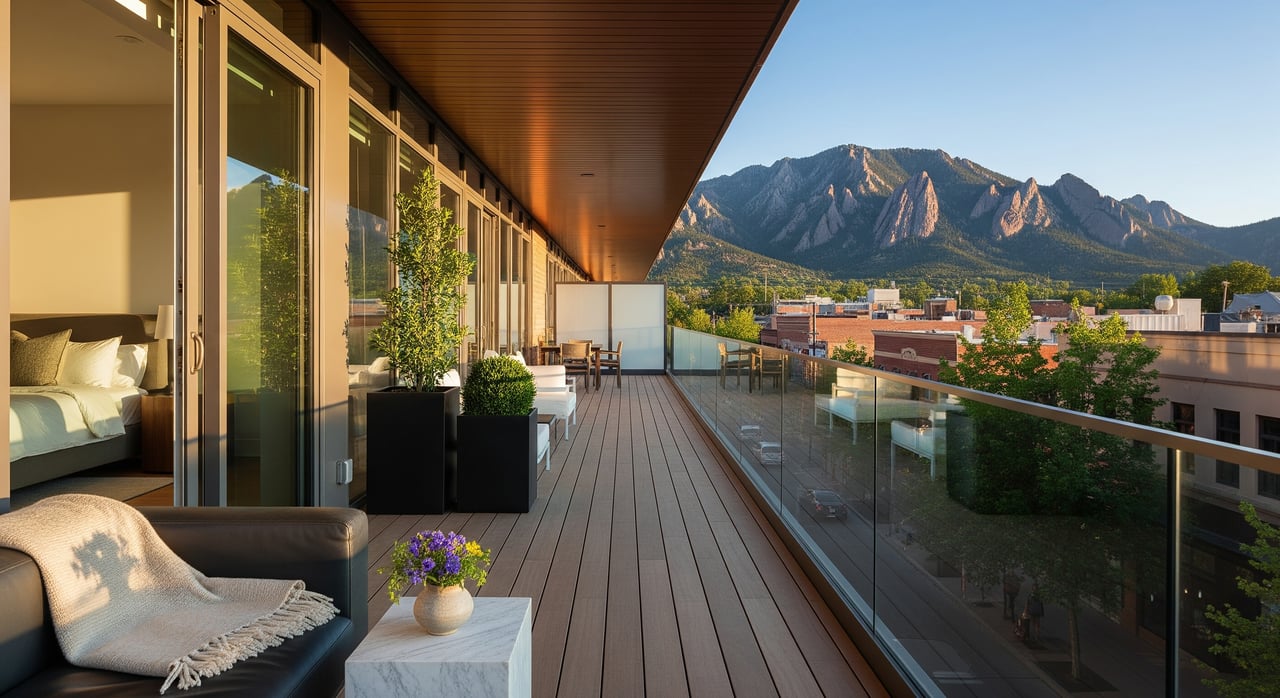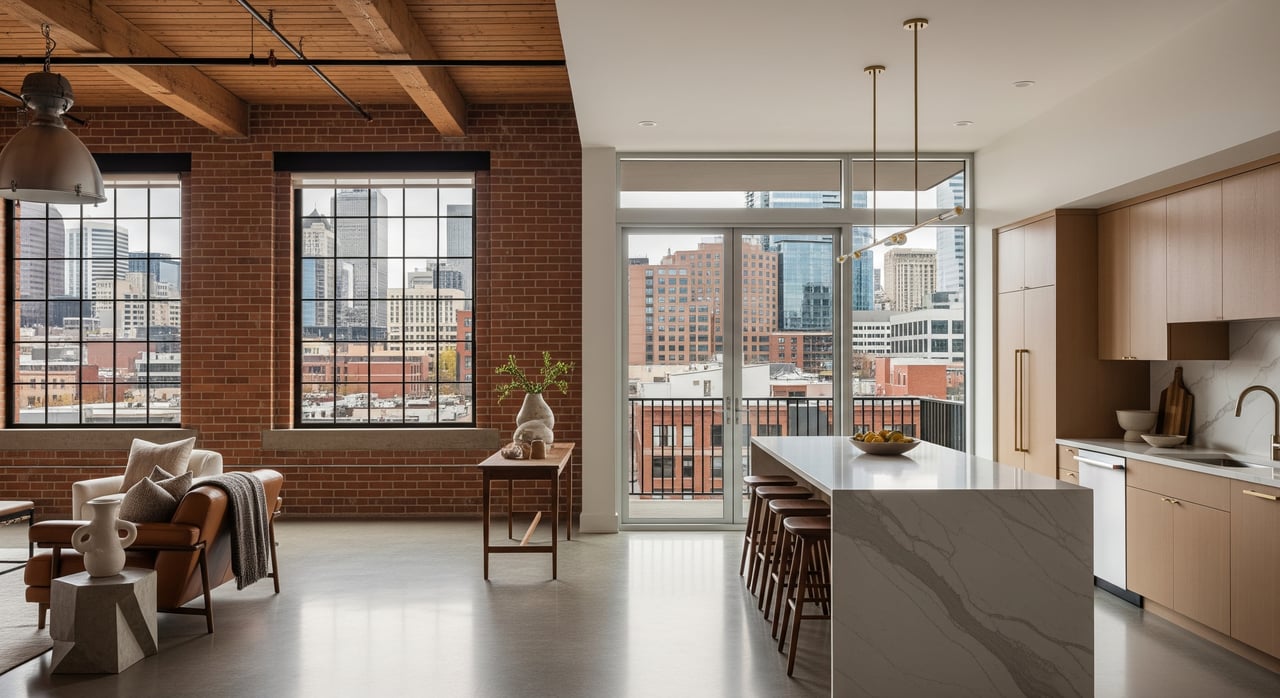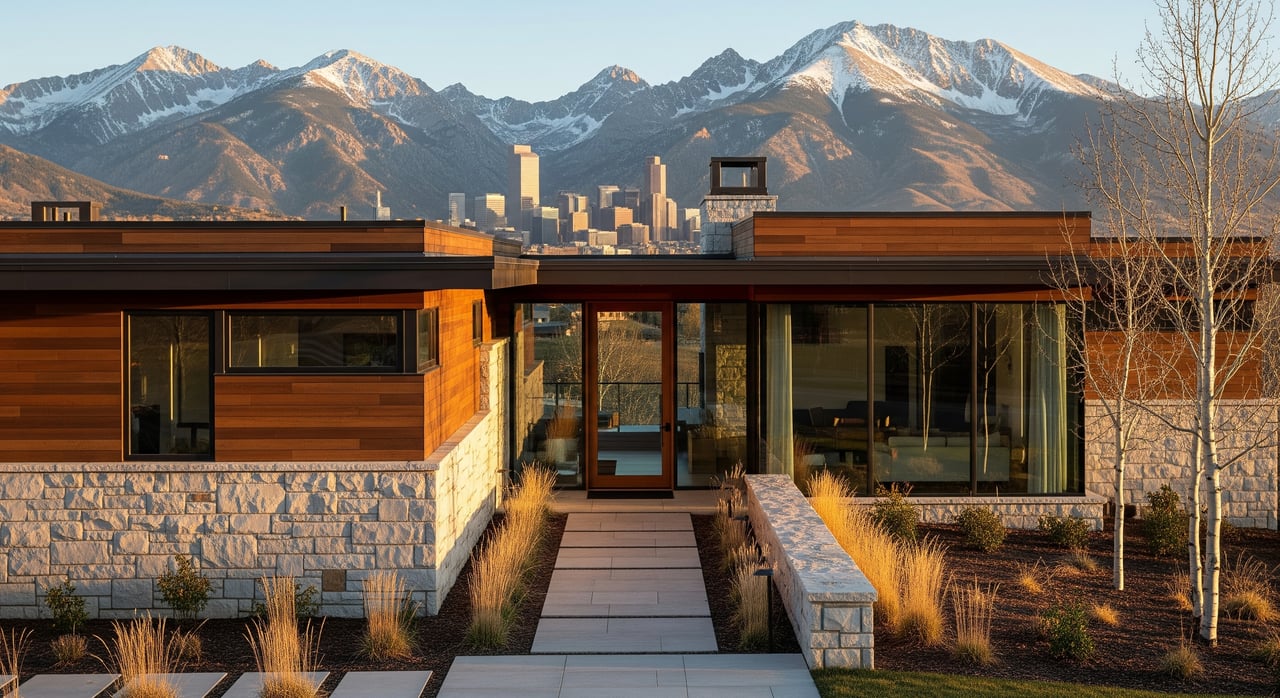Even before its official incorporation in 1861, Denver architecture began shaping this outpost into a prominent gateway to the West—a visual narrative spanning the city’s early gold rush days to its modern urban evolution. Below, we explore the city’s past through three iconic neighborhoods—Capitol Hill, Cherry Creek, and Lower Downtown (LoDo)—each a cornerstone of Denver’s development. These are places where Denver’s story is best told through the brick-and-mortar prose lining its streets, unfolding like chapters in a classic American novel.
Denver: A City Shaped by Its History
From its founding in 1858 during the Pikes Peak Gold Rush to becoming the bustling metropolis it is today, Denver’s architectural landmarks reflect its residents' changing times and values. Downtown Denver boasts several preserved historic buildings illustrating the city’s journey through industrial growth, civic pride, and urban transformation. The city’s embrace of its past, from Denver’s Union Station (b. 1881) to the Daniels & Fisher Tower (b. 1910) to the far more recent Block 162 (b. 2021), demonstrates how Denver honors its origins while looking toward the future.
Capitol Hill: The Pinnacle of Opulence and Society
Once home to Denver’s wealthiest residents, Capitol Hill is a testament to Gilded Age grandeur. The neighborhood’s iconic mansions, including the famous Molly Brown House, reflect the city’s rise to prominence at the turn of the century. Capitol Hill became a preferred address for the elite, with Millionaire’s Row—stately Victorian homes along Grant, Logan, and Sherman Streets—symbolizing Denver’s upper class.
These homes, many of which have been preserved or repurposed, showcase a mix of architectural styles like Italianate, Queen Anne, Second Empire, and Romanesque Revival. The area’s transformation over time into a blend of historic structures and contemporary living adds to its unique charm.
Capitol Hill is also marked by its connection to the state’s political center—the Colorado State Capitol building, with its golden dome, is a key landmark that ties together the civic, residential, and cultural aspects of the neighborhood. Notable homes include:
Molly Brown House
Built in 1889, this Queen Anne-style mansion belonged to Titanic survivor and activist Margaret “Molly” Brown. Today, it's a museum offering a glimpse into Denver’s elite society during the Gilded Age.
Croke-Patterson-Campbell Mansion
A striking example of Richardsonian Romanesque architecture, this 1891-built mansion’s storied history reflects Denver’s early affluence and the eccentric characters who called the neighborhood home. Today, it serves as the Patterson Inn and is included on the National Register of Historic Places.
The Colorado State Capitol
This iconic building, with its golden dome, is a political and architectural symbol of Colorado. Completed in 1894 with state-sourced materials, it reflects the Neoclassical style and is a testament to Denver’s aspirations as a burgeoning state capital.
Cherry Creek: Where Tradition Meets Luxury
Cherry Creek, now synonymous with high-end living and upscale shopping, dates back to Denver’s early days. It began as a modest residential area but evolved into one of the city’s most desirable neighborhoods, blending historic homes with modern luxury estates. The Cherry Creek neighborhood showcases an architectural mix of well-preserved historical homes alongside contemporary structures that appeal to affluent residents. In recent decades, Cherry Creek has become a cultural destination for galleries, fine dining, and boutique shopping, further cementing its place as one of Denver’s most coveted areas.
Cherry Creek’s transformation reflects the city’s ability to meld its historic character with modern luxury living, making it a favorite among real estate investors and homeowners seeking a blend of heritage and sophistication. Key buildings that mark this transformation include:
Historic Homes on 4th and 5th Avenues
These older homes, some dating back to the early 1900s, sit alongside modern estates and townhomes, creating an architectural tapestry that blends history with the neighborhood’s contemporary affluence. Among the more notable is the former Harman Town Hall—Greenleaf Masonic Temple, which served the old Harman community before Denver annexed the area prior to the turn of the 20th century. Built in 1891, the building today serves as a private residence.
MOXY Denver Cherry Creek
A modern building for modern times, this 2017-built hotel, along with a handful of adjacent ultra-trendy urban structures, showcases the juxtaposition of many historical neighborhoods in Denver. Today, Cherry Creek is a hub for luxury endeavors, yet the pastoral pockets of historical charm that remain showcase the city’s long, winding lineage and over a century and a half of transformation.
Lower Downtown: A Success Story in Preservation
Perhaps the most celebrated preservation success story in Denver, Lower Downtown, or LoDo evolved from its 19th-century origins as a commercial hub into one of the city’s most vibrant districts. Thanks to a late 1980s zoning change aimed at promoting preservation and redevelopment and spurring economic rebirth, the city’s original founding footprint transformed from “that one place to avoid” to the city’s most vibrant and celebrated neighborhood.
Framed by Coors Field on one side and Ball Arena on the other, both of which were catalysts to LoDo’s transformation from industrial hub to urban playground in the late 1990s, the district’s warehouses and factories, once integral to Denver’s economy during its boom in rail and industry, found new life as chic lofts, restaurants, and galleries.
The revival of Denver’s Union Station as a centerpiece of LoDo’s renaissance perfectly symbolizes the city’s commitment to historic preservation. LoDo still retains much of its vintage aesthetic but continues to welcome residents, workers, and visitors with newfound swagger many thought was lost. Prominent buildings that showcase LoDo’s historic significance include:
Union Station
The aforementioned heart of LoDo, restoration of the 1914-built icon began in 2001. In 2014, a revitalized Union Station once again became the beating heart of Denver. The grand Beaux-Arts-style structure connects the past to the present as a hub for transportation, dining, and entertainment.
Warehouse Conversions
Many of LoDo’s iconic warehouses, situated along Wynkoop and Wazee Streets, dating back to the late 19th century, have been preserved and repurposed, illustrating how the district’s industrial roots were wisely woven into its modern identity. The most notable include Wynkoop Lofts (built 1899, converted 1993), Edbrooke Lofts (b 1905, c 1990), Acme Lofts (b 1909, c 1992), Steel Bridge Lofts, formerly Great Western Sugar Company (b 1919, c 2002), and Rocky Mountain Warehouse (b 1931, c 1993)
Oxford Hotel
Opened in 1891, this luxurious hotel is one of the oldest in Denver. Its rich history and elegant architecture make it a landmark in LoDo, reflecting the neighborhood’s late 19th-century prosperity. The hotel’s 1983 restoration predates the official timeline of LoDo’s cultural comeback, but it was an early indicator of what’s possible with the right commitment and foresight to preserve Denver’s history and its historic buildings.
Ready to Discover More About Denver’s Vibrant Real Estate Scene?
If you want to explore more of Denver’s luxury real estate market, including vintage condos or single-family homes, or plan to sell one, contact The Modglin Collection today to start your Denver real estate journey. Allow Brigette and Jay’s experience and expertise to help you navigate Denver’s sought-after luxury real estate market.




